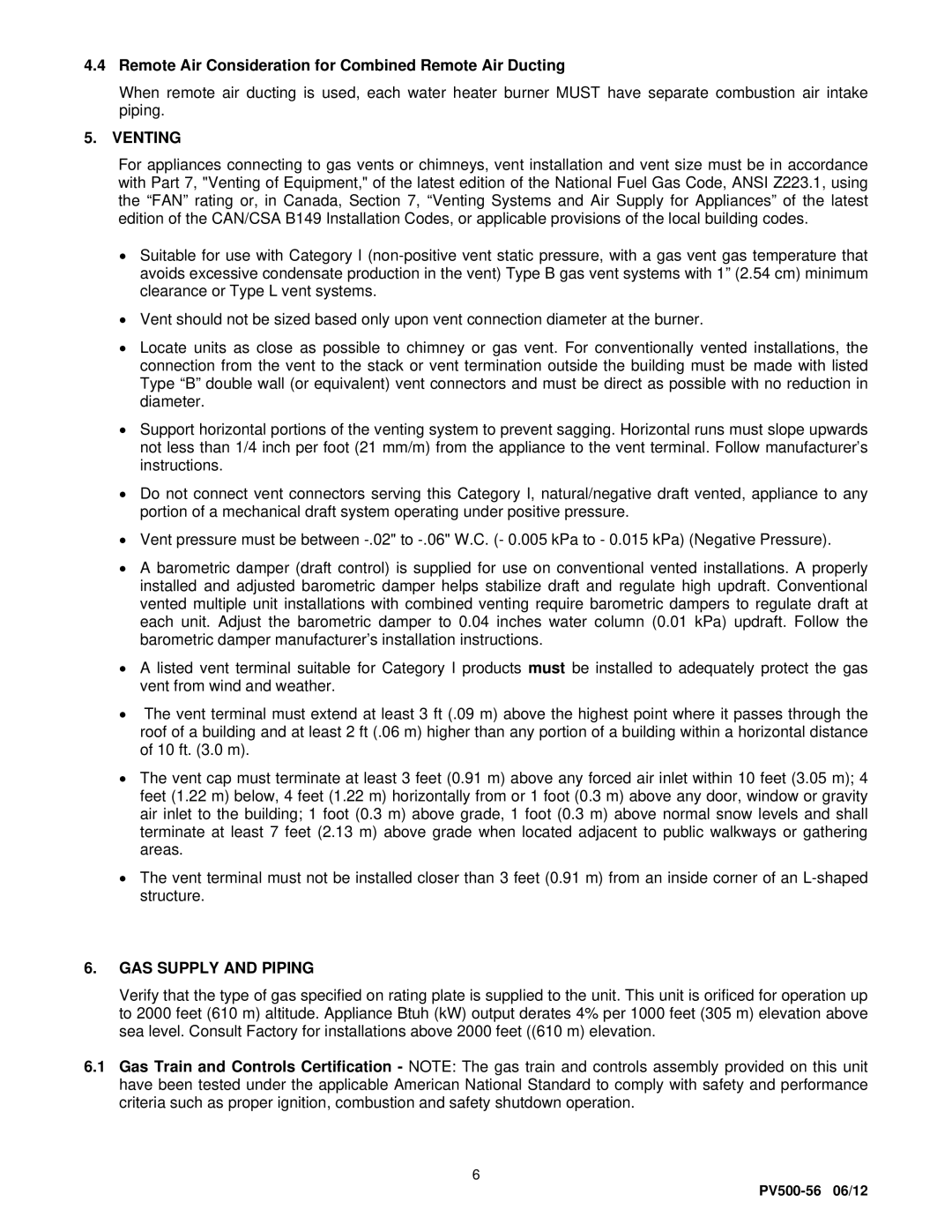4.4Remote Air Consideration for Combined Remote Air Ducting
When remote air ducting is used, each water heater burner MUST have separate combustion air intake piping.
5. VENTING
For appliances connecting to gas vents or chimneys, vent installation and vent size must be in accordance with Part 7, "Venting of Equipment," of the latest edition of the National Fuel Gas Code, ANSI Z223.1, using the “FAN” rating or, in Canada, Section 7, “Venting Systems and Air Supply for Appliances” of the latest edition of the CAN/CSA B149 Installation Codes, or applicable provisions of the local building codes.
Suitable for use with Category I
Vent should not be sized based only upon vent connection diameter at the burner.
Locate units as close as possible to chimney or gas vent. For conventionally vented installations, the connection from the vent to the stack or vent termination outside the building must be made with listed Type “B” double wall (or equivalent) vent connectors and must be direct as possible with no reduction in diameter.
Support horizontal portions of the venting system to prevent sagging. Horizontal runs must slope upwards not less than 1/4 inch per foot (21 mm/m) from the appliance to the vent terminal. Follow manufacturer’s instructions.
Do not connect vent connectors serving this Category I, natural/negative draft vented, appliance to any portion of a mechanical draft system operating under positive pressure.
Vent pressure must be between
A barometric damper (draft control) is supplied for use on conventional vented installations. A properly installed and adjusted barometric damper helps stabilize draft and regulate high updraft. Conventional vented multiple unit installations with combined venting require barometric dampers to regulate draft at each unit. Adjust the barometric damper to 0.04 inches water column (0.01 kPa) updraft. Follow the barometric damper manufacturer’s installation instructions.
A listed vent terminal suitable for Category I products must be installed to adequately protect the gas vent from wind and weather.
The vent terminal must extend at least 3 ft (.09 m) above the highest point where it passes through the roof of a building and at least 2 ft (.06 m) higher than any portion of a building within a horizontal distance of 10 ft. (3.0 m).
The vent cap must terminate at least 3 feet (0.91 m) above any forced air inlet within 10 feet (3.05 m); 4 feet (1.22 m) below, 4 feet (1.22 m) horizontally from or 1 foot (0.3 m) above any door, window or gravity air inlet to the building; 1 foot (0.3 m) above grade, 1 foot (0.3 m) above normal snow levels and shall terminate at least 7 feet (2.13 m) above grade when located adjacent to public walkways or gathering areas.
The vent terminal must not be installed closer than 3 feet (0.91 m) from an inside corner of an
6.GAS SUPPLY AND PIPING
Verify that the type of gas specified on rating plate is supplied to the unit. This unit is orificed for operation up to 2000 feet (610 m) altitude. Appliance Btuh (kW) output derates 4% per 1000 feet (305 m) elevation above sea level. Consult Factory for installations above 2000 feet ((610 m) elevation.
6.1Gas Train and Controls Certification - NOTE: The gas train and controls assembly provided on this unit have been tested under the applicable American National Standard to comply with safety and performance criteria such as proper ignition, combustion and safety shutdown operation.
6
